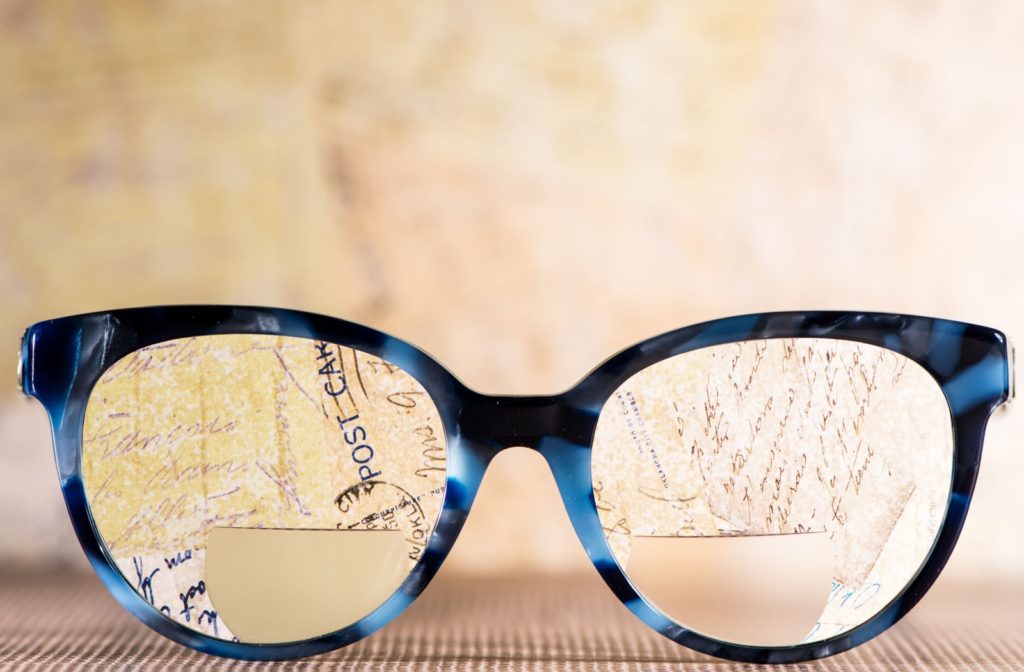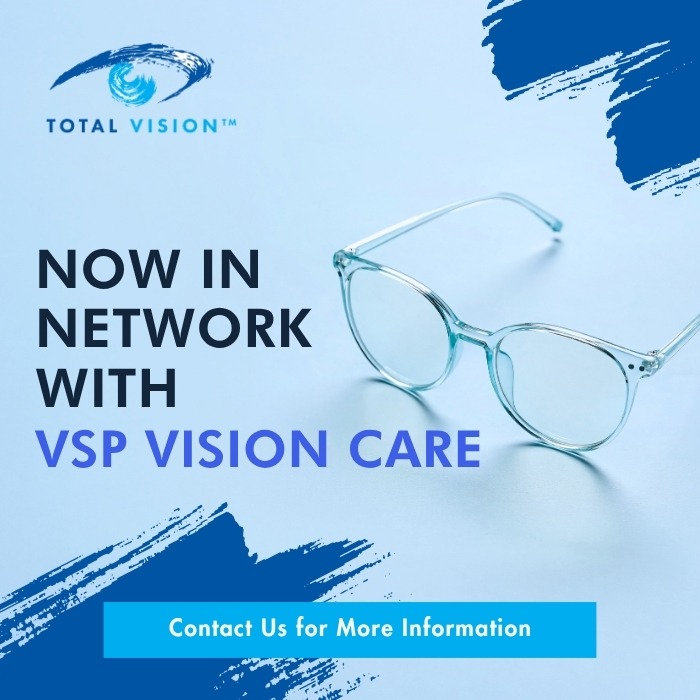As we grow older, we gradually lose the ability to see up-close objects clearly. This condition is called presbyopia. Everyone eventually develops presbyopia, which means that glasses end up being a staple accessory for all of us—even if we didn’t require vision correction while we were young. But suddenly having to bring an extra pair of glasses along to deal with your presbyopia might feel annoying and tedious.
Fortunately, there’s a solution. Reading and distance glasses can be combined! Lens options for reading and distance correction include bifocal, multifocal, and trifocal glasses.
What is Presbyopia?
Presbyopia is an age-related condition where the eye gradually loses its ability to focus on close objects. Developing presbyopia is inevitable, as it’s a natural part of aging; it usually starts to affect people in their 40’s and 50’s.
Routine eye exams are encouraged every two years for adults between 19 and 64 years old. Additionally, eye professionals recommend an eye exam at age 40. It’s around this age that early signs of age-related vision changes, like presbyopia, begin to develop.
In a healthy, youthful eye, the lens is flexible and can easily change shape to focus light directly onto the retina, providing clear vision at various distances.
But this flexibility diminishes with age. As the lens hardens and becomes less adaptable, it struggles to bend light adequately for near vision. When light enters the lens and is refracted by the cornea, that light is focused behind the retina, resulting in blurry vision.
This misalignment of light is the reason why people with presbyopia experience difficulty reading or seeing objects up close without corrective lenses.
Other refractive errors like myopia, hyperopia, or astigmatism can accompany presbyopia. Combining a distance and reading prescription into one pair of glasses eliminates the need for carrying multiple glasses, making life much simpler.
Reading & Distance Prescriptions for Myopia Control
While reading and distance glasses are most commonly used to correct presbyopia, they also help effectively manage myopia progression, making them a great treatment option for myopia control in children.
Multifocal and bifocal lenses help manage myopia by offering different focal points that reduce the stress on the eye’s focusing mechanism. This mechanism has been shown to slow down the rate at which myopia progresses, offering long-term benefits for eye health.
Bifocal Lenses
Bifocal lenses are one of the most well-known solutions for correcting presbyopia. These lenses contain two distinct visual powers marked by a line running across the lens. The top half of the lens contains a distance prescription while the bottom half has the reading prescription.
Pros of Bifocal Lenses
- Affordable: Investing in bifocals can be more economical compared to purchasing separate pairs of reading and distance glasses.
- Variety of Styles: Modern bifocals come in various styles and designs, allowing users to choose frames that reflect their tastes.
Cons of Bifocal Lenses
- Adaptation Period: Many users report initial discomfort, such as headaches or dizziness, while adjusting to bifocals. This can take several days or weeks to resolve.
- Visible Divider: The line separating the two lens powers can be noticeable and may be considered unappealing by some wearers.
- Limited Intermediate Vision: Bifocals are designed primarily for distance and near vision, which may leave a gap in intermediate vision, making certain tasks like computer work less straightforward.
- Distortion: The lens division can sometimes cause visual distortions, especially when looking down or moving the head quickly, which might take time to get used to.

Multifocal Lenses
Multifocal lenses provide a smooth progression from distance to intermediate to near vision. This means you can see clearly at all distances without the abrupt change that bifocals have. The top portion is for distance, the middle for intermediate ranges (like computer work), and the bottom for reading.
The adaptation period for multifocal lenses can be longer than for bifocals. However, once adjusted, many find these lenses more natural and convenient.
Pros of Multifocal Lenses
- Seamless Transition: Multifocal lenses offer a smooth, gradual transition between different focal points, allowing for clear vision at any distance without the noticeable lines found in bifocal lenses.
- Aesthetic Appeal: The absence of visible lines makes multifocal lenses more aesthetically pleasing, as they resemble single-vision lenses.
- Versatility: These lenses are particularly well-suited for individuals who need to switch frequently between tasks at varying distances, such as reading, working on a computer, and driving.
- Wide Field of Vision: Multifocal lenses provide a broader field of vision compared to traditional bifocal or trifocal lenses, making them more adaptable for everyday activities.
Cons of Multifocal Lenses
- Longer Adaptation Period: Adjusting to multifocal lenses can take longer due to the learning curve associated with finding the right focal point, especially for peripheral vision.
- Price Range: Multifocal lenses are generally more expensive than bifocals or single-vision lenses, making them a less affordable option for some.
- Peripheral Distortion: Some users may experience peripheral distortions or “swim” effects, which can be dizzying or disorienting during the adjustment period.
- Complex Fitting Process: Properly fitting multifocal lenses requires a detailed, precise process to ensure the transitions between focal points align correctly with the wearer’s natural eye movements. This might require more frequent visits to the optometrist for adjustments.
Trifocal Lenses
Trifocal lenses are another option for correcting presbyopia and include three distinct focal points marked by visible lines similar to bifocals. Like bifocals and multifocals, trifocal lenses come with an adaptation period. The transition between the three different focal points can be a bit challenging at first.
Pros of Trifocal Lenses
- Comprehensive Vision Coverage: Like multifocals, trifocals provide clear vision at three distinct distances, making them great for people who require vision correction across multiple ranges.
- Enhanced Intermediate Vision: The addition of an intermediate vision section sets trifocals apart from bifocals, offering improved clarity for tasks that take place at arm’s length.
Cons of Trifocal Lenses
- Visible Lines: Like bifocals, trifocal lenses have visible lines dividing the three focal sections, which some users may find aesthetically unappealing.
- Potential for Distortions: Like bifocals and multifocal, the transitions between sections in trifocals can cause visual distortions or “jump” effects, particularly when moving the eyes quickly.
- Limited Field of Vision: The segmented nature of trifocal lenses can create a restricted field of vision for each distance, which may not be ideal for all activities.
Visit Our Team
Several options are available for those who’d prefer to have one pair of glasses containing both their reading and distance prescription.
Connect with our team at Seal Beach Eyes to find which lens options are most suitable for your ocular needs and lifestyle!




